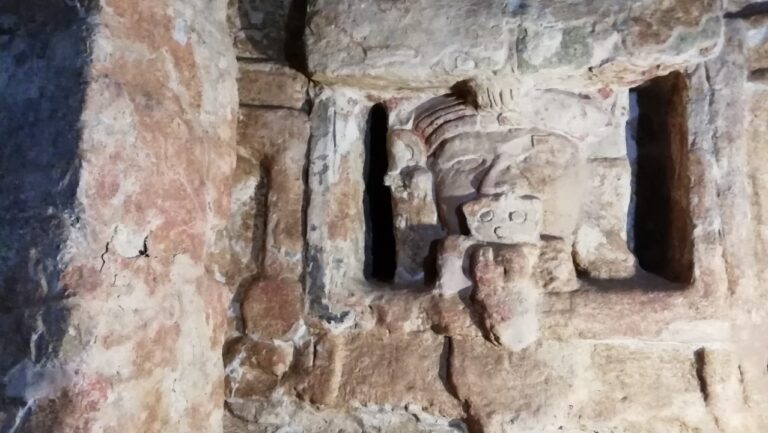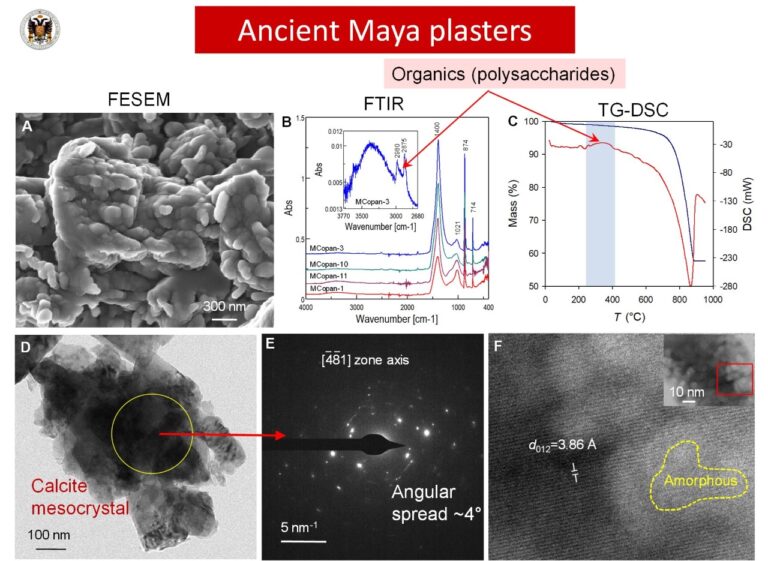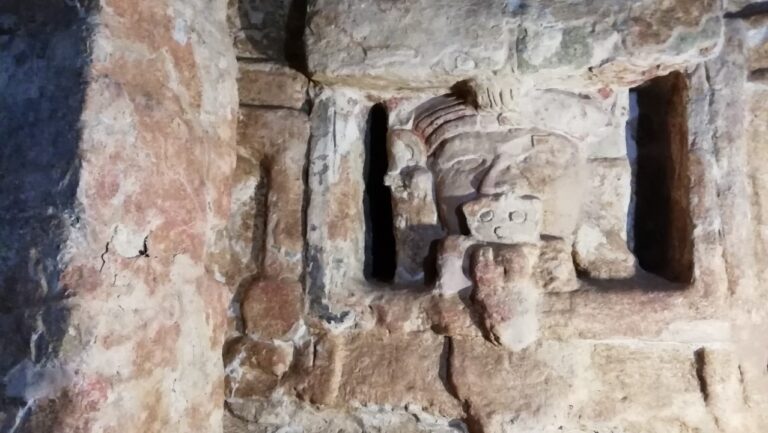Scientists from the University of Granada (UGR) have revealed the secret of the ancient Mayan builders who produced lime mortars and stuccos with extraordinary durability, which have survived to this day in excellent condition: lime mortars made with plant extracts.
In a recent publication in the prestigious journal Science Advances, researchers from UGR, Carlos Rodríguez Navarro, Encarnación Ruiz Agudo, Kerstin Elert, and Miguel Burgos Ruiz, analyzed the materials used to construct the Mayan archaeological site of Copán in Honduras, dating from the 4th to the 9th century.
Their work was part of a research project in collaboration with Harvard University, the Santander Foundation, the Honduran Institute of Anthropology and History, and the Laboratory of Maya Sculpture Conservation (LACEM) team in Copán, Honduras.
The researchers analyzed the materials used in the construction of the Mayan archaeological site of Copán, located in western Honduras, 14 kilometers from the border with Guatemala. These ruins were declared a World Archaeological Heritage site by UNESCO in 1980.
Ancestors of the Mayans built this city between the 4th and 9th centuries in a narrow strip of land separating the Caribbean from the Pacific.
“Until now, it was not known why the monuments built by the ancient Mayan builders, in many cases, remain in excellent condition today, despite being exposed for over a thousand years to a highly aggressive tropical climate,” explained the lead author of this study, Carlos Rodríguez Navarro, a professor in the Department of Mineralogy and Petrology at UGR.
Using highly detailed analysis techniques such as transmission electron microscopy (TEM) and high-resolution X-ray diffraction using synchrotron radiation, the UGR research group demonstrated that the ancient lime mortars and stuccos at the Mayan archaeological site of Copán contained organic compounds.
Furthermore, they had a cement made of calcite crystals (CaCO3) with nano and mesostructural characteristics (the structure of these crystals ranges from atomic and molecular scales to micrometric scales) similar to those found in calcite biominerals (e.g., bivalve shells).
The researchers aimed to prove in this study that the organic compounds in lime mortars could play a hardening role similar to (bio)macromolecules in calcite biominerals (which have much greater mechanical strength than purely inorganic calcite), following the guidance of local builders in Copán who inherited the construction tradition of the ancient Maya civilization from which they descended.
“To do this, we prepared lime mortar replicas dosed with extracts rich in polysaccharides from the bark of trees common in the Maya area, such as chukum (Havardia albicans) and jiote (Bursera simaruba),” explained Rodríguez Navarro.
He noted that the analytical results demonstrated that the replicas had characteristics similar to those of the ancient Mayan lime mortars and stuccos containing organic compounds.
Furthermore, “we have shown that, similar to biominerals, both historical Mayan mortars and replicas have a calcite cement that includes intercrystalline and intracrystalline organic compounds (polysaccharides) that impart marked plasticity and greater toughness and fracture resistance to the mortar matrix while increasing its resistance to chemical alteration by reducing its dissolution rate,” he said.
In combination, these effects, similar to those that allow mollusk shells or sea urchin spines to be extremely resistant, have allowed the mortars and stuccos of the ancient Maya civilization’s constructions to survive to the present day in excellent condition on occasion.
The researcher emphasized that, in light of the research results, the use of plant extracts in modern times could help develop new lime mortars, coatings, and stuccos optimized and compatible with the preservation of historical-artistic heritage and modern, sustainable construction.


Additionally, he highlighted that these results pave the way for the design of new lime-based biomimetic binders that include natural or synthetic organic compounds with specific functionalities or known hardening effects, similar to the organic compounds present in calcitic biominerals.
TYT Newsroom


